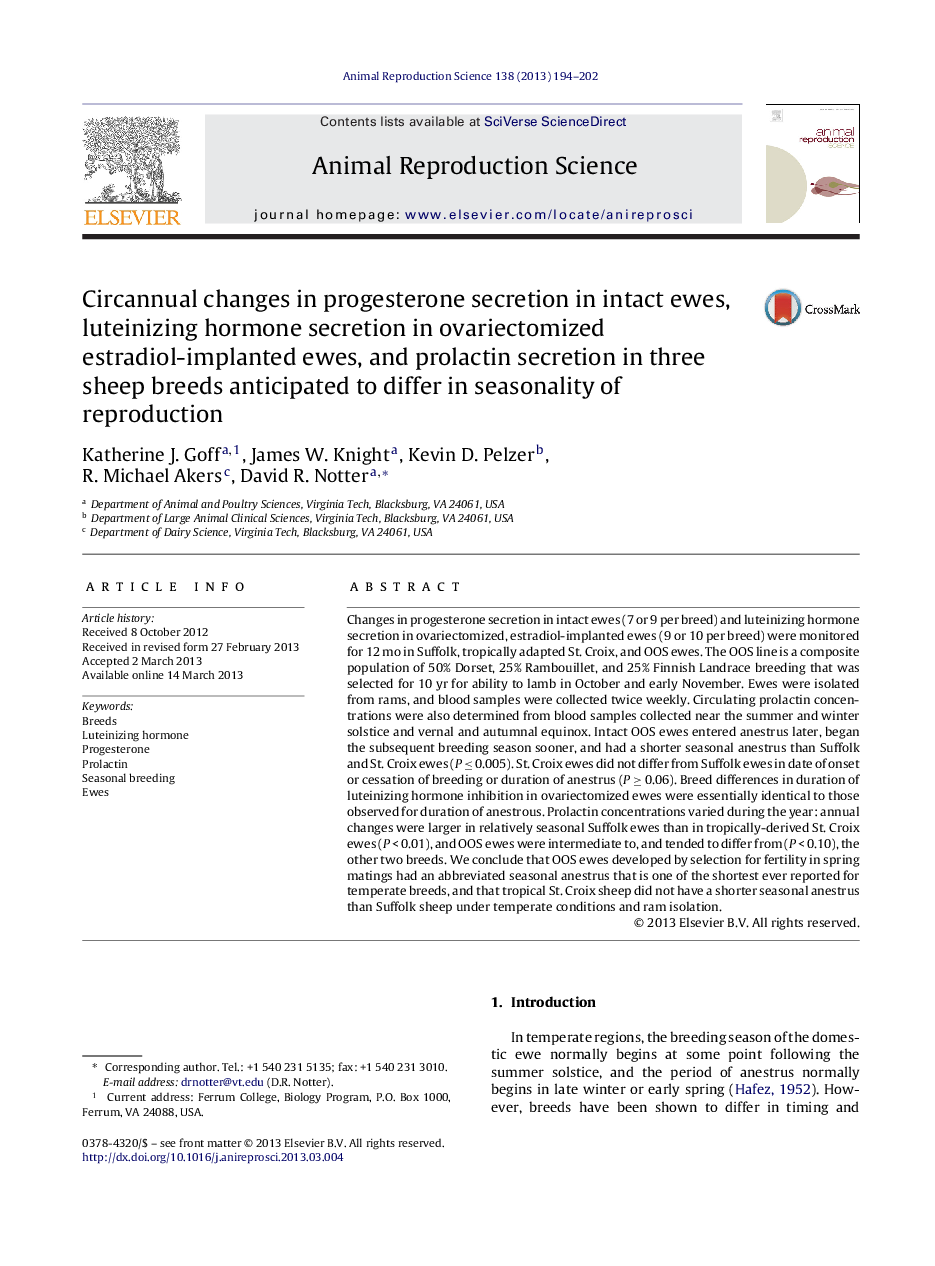| Article ID | Journal | Published Year | Pages | File Type |
|---|---|---|---|---|
| 8405120 | Animal Reproduction Science | 2013 | 9 Pages |
Abstract
Changes in progesterone secretion in intact ewes (7 or 9 per breed) and luteinizing hormone secretion in ovariectomized, estradiol-implanted ewes (9 or 10 per breed) were monitored for 12 mo in Suffolk, tropically adapted St. Croix, and OOS ewes. The OOS line is a composite population of 50% Dorset, 25% Rambouillet, and 25% Finnish Landrace breeding that was selected for 10 yr for ability to lamb in October and early November. Ewes were isolated from rams, and blood samples were collected twice weekly. Circulating prolactin concentrations were also determined from blood samples collected near the summer and winter solstice and vernal and autumnal equinox. Intact OOS ewes entered anestrus later, began the subsequent breeding season sooner, and had a shorter seasonal anestrus than Suffolk and St. Croix ewes (P ⤠0.005). St. Croix ewes did not differ from Suffolk ewes in date of onset or cessation of breeding or duration of anestrus (P ⥠0.06). Breed differences in duration of luteinizing hormone inhibition in ovariectomized ewes were essentially identical to those observed for duration of anestrous. Prolactin concentrations varied during the year: annual changes were larger in relatively seasonal Suffolk ewes than in tropically-derived St. Croix ewes (P < 0.01), and OOS ewes were intermediate to, and tended to differ from (P < 0.10), the other two breeds. We conclude that OOS ewes developed by selection for fertility in spring matings had an abbreviated seasonal anestrus that is one of the shortest ever reported for temperate breeds, and that tropical St. Croix sheep did not have a shorter seasonal anestrus than Suffolk sheep under temperate conditions and ram isolation.
Related Topics
Life Sciences
Agricultural and Biological Sciences
Animal Science and Zoology
Authors
Katherine J. Goff, James W. Knight, Kevin D. Pelzer, R. Michael Akers, David R. Notter,
